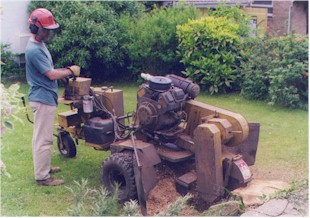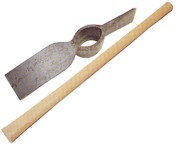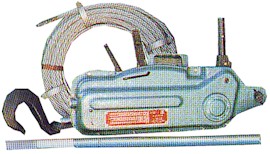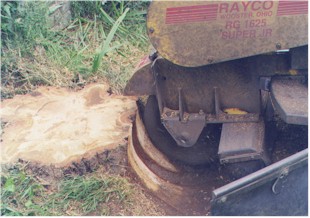 Tree
Stump Removal
Tree
Stump Removal Tree
Stump Removal
Tree
Stump Removal
Tree stump removal can be difficult and costly so it is important to be sure that removal is absolutely necessary.
After a tree has been removed its stump can normally be cut close to soil level without danger of damaging the chainsaw.
If the stump is located in a wooded area or hidden within a shrub bed, removal may not be necessary and retention will certainly save you lots of work or money. However, stumps can attract diseases such as Honey Fungus which is one of the most dangerous because it can spread through the ground and infect other living trees which may be located nearby. Or, it may be that the stump is located on a grassed lawn or in a place where replanting is a requirement; in these situations removal is necessary.
The Stump
The tree stump is traditionally the part that sticks up out of the ground after a tree has been felled but this is actually only the tip of the root ball which can vary in size. The root ball consists of the main support roots which are packed together and growing outwards from a tight clump. The roots are designed to support the tree so they will be very firm and difficult to remove. Even the smallest sapling can be difficult if not impossible to pull out by hand.
There are a number of different ways to remove a tree stump from the ground with the chosen method being dependent on various conditions.
Removal with Hand Tools
 Tree stumps of a small diameter (up to 6" or 150mm) can be removed
relatively easily with a spade and/or preferably a mattock (see photograph). The mattock
(sometimes called a 'grubber') is designed to cut as well as dig and is useful for slicing
through roots. It is important not to cut down the tree completely
but to retain the tree trunk as a means of leverage. This can be inconvenient since it is
much easier to fell a tree completely in one go. However, to retain a 1-2m high stem which
remains attached to the root will speed up the root removal tenfold. The method then
follows a procedure of first digging around each stump, severing the roots and levering
with the tree trunk until it can be twisted out of the ground.
Tree stumps of a small diameter (up to 6" or 150mm) can be removed
relatively easily with a spade and/or preferably a mattock (see photograph). The mattock
(sometimes called a 'grubber') is designed to cut as well as dig and is useful for slicing
through roots. It is important not to cut down the tree completely
but to retain the tree trunk as a means of leverage. This can be inconvenient since it is
much easier to fell a tree completely in one go. However, to retain a 1-2m high stem which
remains attached to the root will speed up the root removal tenfold. The method then
follows a procedure of first digging around each stump, severing the roots and levering
with the tree trunk until it can be twisted out of the ground.
Removal with Hand Winch
 This method is similar to the previous except that a powerful hand operated
winch is used to pull the tree over. Various winches are available for such a task with
the most popular being the Tirfor or Brano style. These can be hired and are available as
3 ton and 5 ton capacity. A powerful winch is theoretically capable of pulling over fully
mature trees with a very large stem diameter but this would require extensive ground
preparation and so would not normally be attempted. We use a 5 ton capacity winch to pull
out trees of up to 300-400mm in diameter but even these sizes sometimes require a fair
amount of work with the mattock and spade.
This method is similar to the previous except that a powerful hand operated
winch is used to pull the tree over. Various winches are available for such a task with
the most popular being the Tirfor or Brano style. These can be hired and are available as
3 ton and 5 ton capacity. A powerful winch is theoretically capable of pulling over fully
mature trees with a very large stem diameter but this would require extensive ground
preparation and so would not normally be attempted. We use a 5 ton capacity winch to pull
out trees of up to 300-400mm in diameter but even these sizes sometimes require a fair
amount of work with the mattock and spade.
The procedure requires a steel winch cable to be attached to the top of the retained tree stem and then anchored at some distance away. A small trench is first dug on the side of the stump which faces the winch with main roots being severed. As the tree stem is now winched over, the root plate pivots and begins to lift, with further root severance being carried out where necessary.
In some cases the winch can be replaced with a tractor, heavy plant (such as JCB) or even a Landrover as a means for pulling over the trunk.
In all cases (especially while winching) great care needs to be exercised with regards to safety. An over tensioned winch cable that suddenly breaks can easily decapitate the human head as it recoils. Additionally, care needs to be taken to ensure that the stem doesn't fracture before the root is removed. All winches and cables should be regularly tested and have a certificate proving this.
Using Mechanical Excavating Plant.
The use of mechanical plant should always be considered for the larger stumps or when a large number of any size need to be removed. Many hire centres will hire out the smaller tracked excavators, normally with an operator. For the larger stumps a JCB could be contracted by the hour. Using such equipment can be very cost effective and will save many hours of manual work. However, they are dependant upon access and will cause some level of ground disturbance.
As with all root removal operations it is important to consider the subject of disposal. If you are carrying out the removal from your own garden then you should be able to make use of the public rubbish disposal sites. However, root-balls are heavy and can be difficult to transport. Skip hire is an easier option but can be costly. Some skip hire companies charge extra for roots so check first. You will also need to fill the excavated holes with new topsoil, turf etc.
Stump Grinding Machine
One of the most common methods of stump removal is by way of the stump grinding machine. They are available in a number of sizes with the smallest being able to squeeze through a normal sized garden gate. They produce minimal damage to the surrounding ground but are not normally available for self hire to the general public.
 The adjacent photograph
(and top) shows Bill Preston (of BHP Engineering, Romsey, Hants) operating such a machine
during the removal of a dead Birch stump.
The adjacent photograph
(and top) shows Bill Preston (of BHP Engineering, Romsey, Hants) operating such a machine
during the removal of a dead Birch stump.
The machine consists basically of a cutting head driven at very high speeds by a petrol or diesel engine. The cutting head sweeps from side to side as it cuts and the whole machine is pushed forwards between sweeps to maintain the cutting process. Once a slice has been removed from the stump the cutting head is lowered and the procedure repeated. The cutting teeth are designed to cut and pulverise wood, soil and small stones into a wood chip mixture which can be composted and used as a garden mulch.
Stump grinding machines are ideal for removing the tops of stumps and roots (to a depth of around 6") so that grass turf or shrubs can be laid over its top. Grinding to very deep depths so as to remove all traces of the root-ball is possible but may not be cost effective and the smaller machines may struggle.
Most tree surgery companies have access to a stump grinder and a few firms such as BHP specialise only in root removal.
Chemicals
There are no chemicals available which will rot away a tree stump since wood decay is a natural process requiring time, fungi, insects etc. However, there are chemicals available which will kill a tree stump and thus speed up the process of infection by decay causing pathogens. Also, many species of tree will form new shoots from its stump and/or roots after it has been felled. Treating the stump with a herbicide will prevent such regrowth from this part of the tree but may not prevent the formation of suckers from major roots growing further away from the stump (see Root Suckers).
We generally use Ammonium Sulphamate crystals which are available from most DIY centres as the boxed 'Root Out' product. The crystals should be sprinkled over the freshly cut stump face concentrating them towards the circumference. Once in place the crystals should be covered and stapled down with a plastic dustbin bag to prevent the rain washing the crystals away; it will also prevent pets & children from touching them.
Another chemical available is SBK, which is easily available and comes supplied as a liquid in a plastic bottle. The mixture has a strong acrid smell which is difficult to remove from hands and clothes so it is essential to use plastic gloves and care while mixing. Follow the directions on the packaging. Application to the stump face is best carried out after holes have been drilled or slots cut with a chainsaw to facilitate penetration. Cover the application with plastic sheet and staples.
© 2001 Chris Skellern. AIE. Home | News | A-Z Index | Resources | Contact AIE | Terms of Use